Something new: The Duirinish Stone looks as if it came from the Stone Age, but it was erected here at the turn of the millennium. But there is also something historic here: St. Mary’s Church including a cemetery and a special monument.
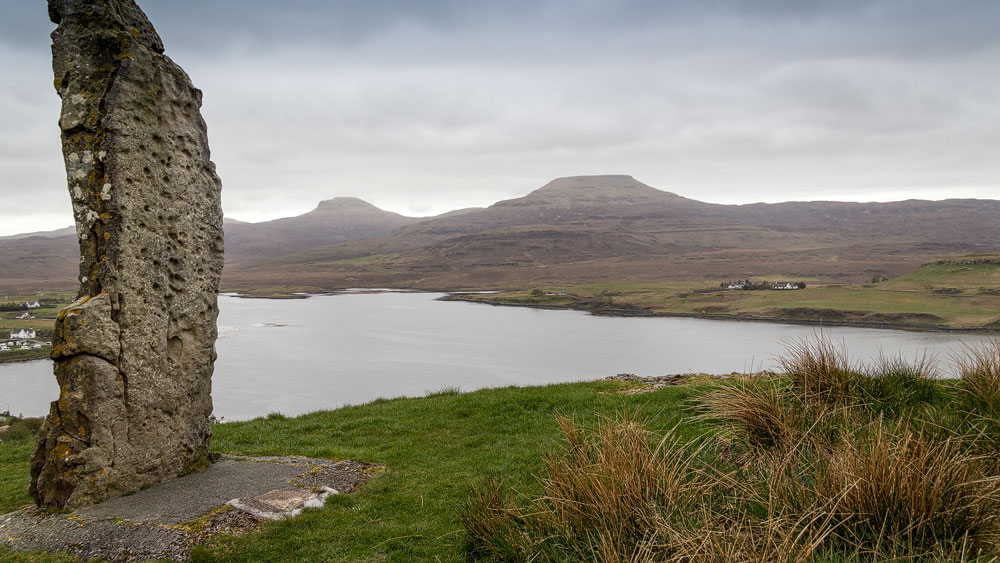
As a sign in the ages, the community of Dunvegan erected this monolith. To erect it, they used the old methods – read: manual labor. After all, the stone rises five meters in the air and weighs as many tons. A time capsule has been embedded in its foundation, containing things of today’s life, so that future generations can gain an insight into the daily life of that time.
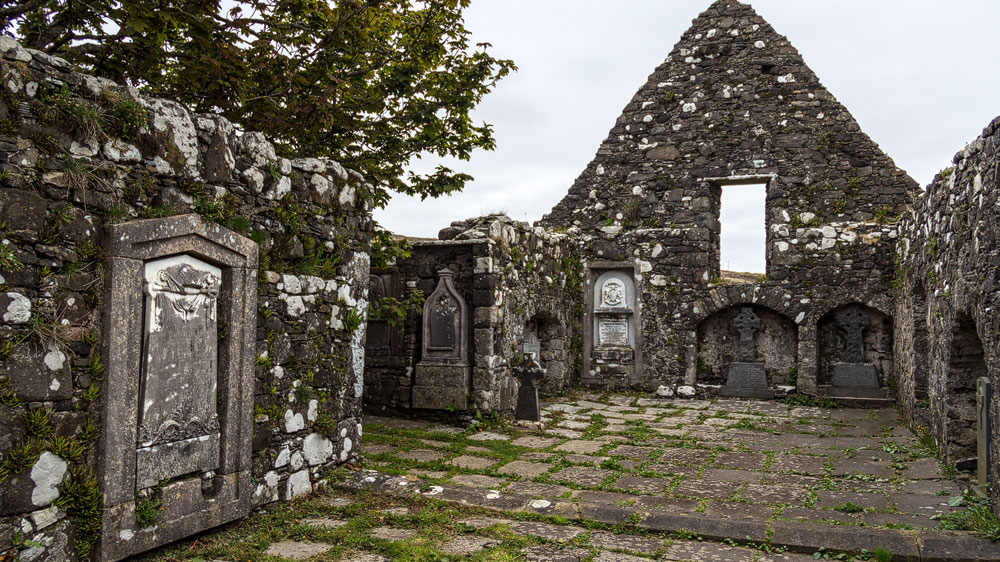
The landscape around the stone is worth seeing. The Duirinish Stone sits atop a hill, with Loch Dunvegan stretching into the hinterland in the background and MacLeod’s Tables in the distance. At the foot of the hill is the ruined church of St Mary’s Church. As is so often the case, the venerable old place of worship has since been replaced by a new one, and subsequently left to decay. Around the ruins crowd old graves. In them lie five clan chiefs of the MacLeods. And also in the churchyard lie the MacCrimmons, the family of the bagpipers who served the Clan MacLeod from time immemorial. There is even a plaque embedded in the wall of the church for them.
Knowledge: Lord Lovat and the memorial
A large obelisk protrudes from the tombstones. This is the Lovat monument. Simon Fraser, whose noble title was “Lord Lovat”, erected the spiky structure in memory of his father, who died on a visit to Dunvegan Castle in 1699 – a long way from his home near Inverness in eastern Scotland.
Simon Fraser later achieved sad fame himself: like many, he aided the ill-fated Prince Charles Edward Stuart in his rebellion and escape. He was imprisoned and executed in London. Lord Lovat was the last person to die by beheading in England.
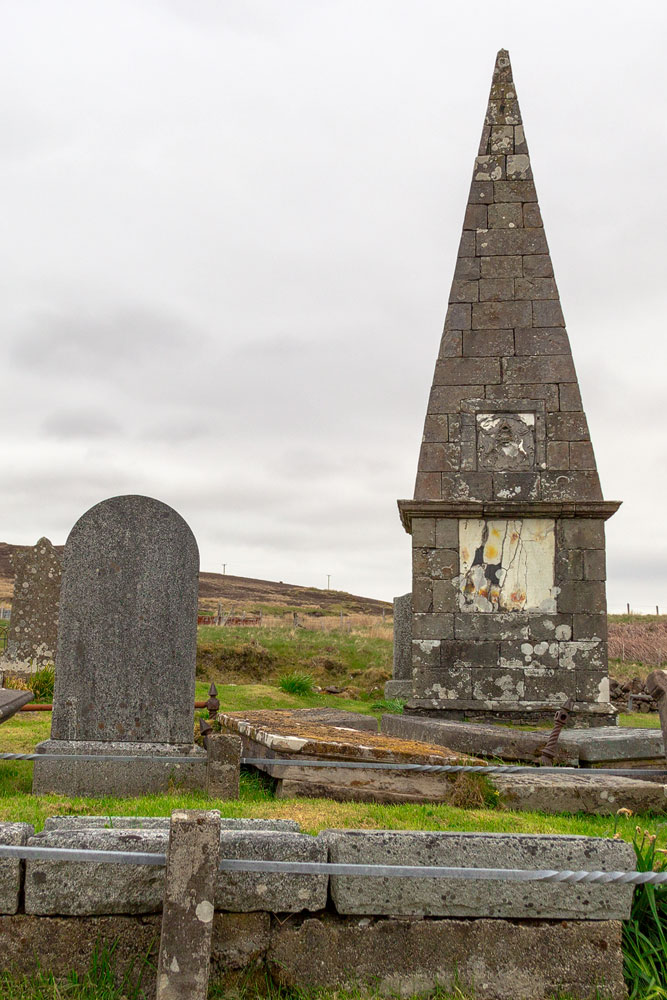
To view the Duirinish Stone and church, you can take a loop trail that also passes another ruin. Although the walk is not long, footwear that can at least handle mud is recommended.
Tip: A photo at the stone
Looking south from the Duirinish Stone, the two MacLeod’s Tables lie beyond – a top backdrop for a photo with people.
Personal note: A short walk
The church and stone, along with a third ruin, are on a small – but thoroughly muddy – circular walk. We did the little walk after visiting Dunvegan Castle and enjoyed it as a little rounding off to the whole day in the area.
Directions:
With sat nav: “IV55 8GT” gets you pretty close.
Without sat nav:From Portree, take the A87 to Uig, then turn onto the A850 to Dunvegan. Just before Dunvegan on the right hand side is St Mary’s Church.
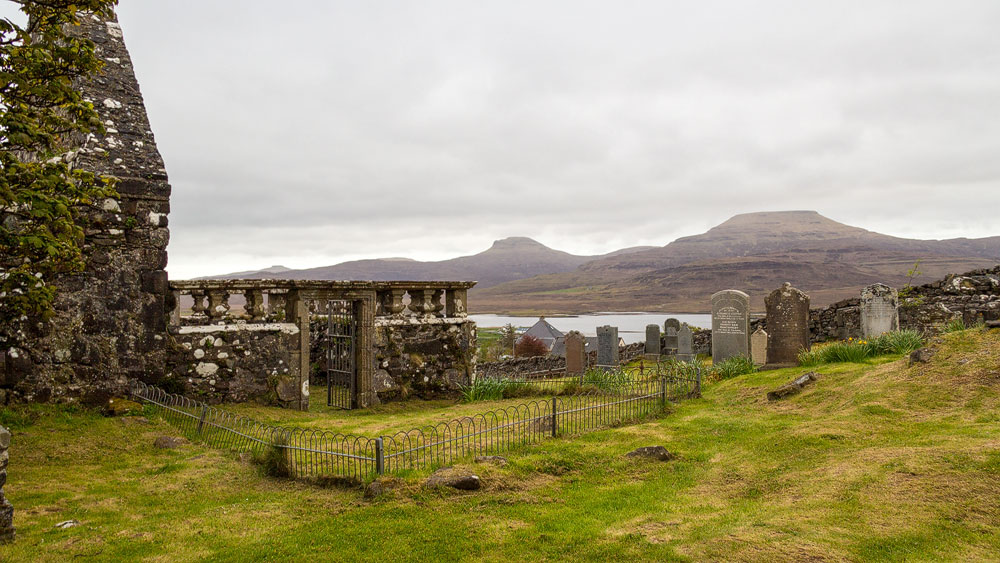
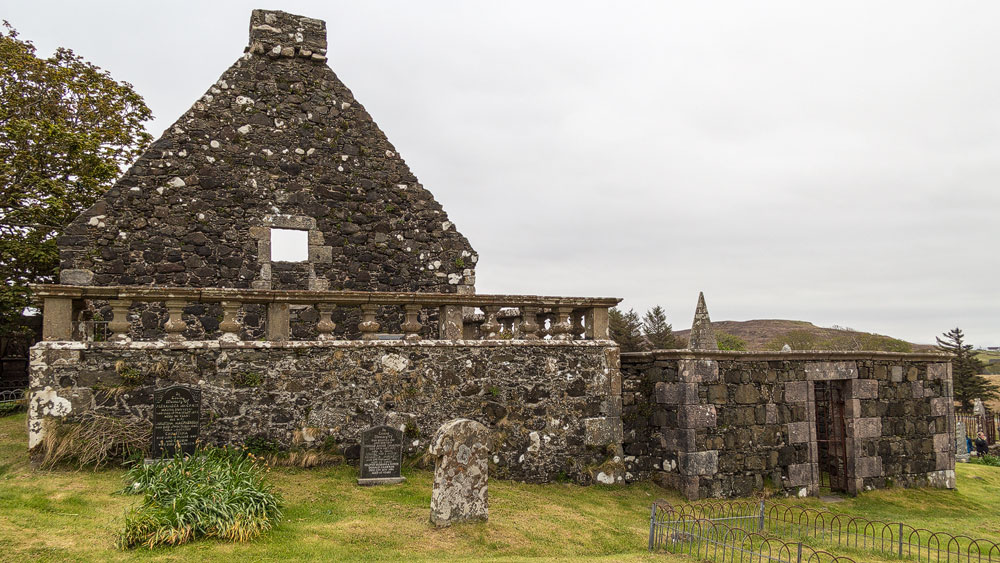
Saint Mary’s is a remarkable historical site. It is a shame that the owners don’t clear the dirt off the underlying headstones and restore it to its original grandeur.
Does it look that bad?